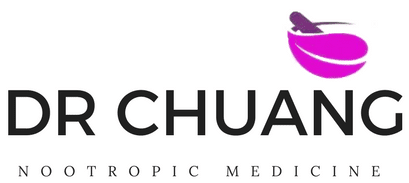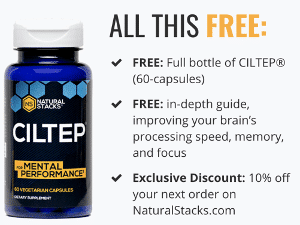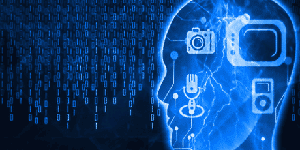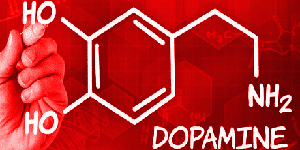Table of Contents
Top 10 Nootropics Severe Depression
Most people will experience at least one temporary mild-to-moderate depression during their lifetime1.
But severe depression? That’s a completely different animal.
Mild depression can actually be an adaptive 2 behavior when it’s favorable to withdraw from your environment.
From a (reductionistic) evolutionary standpoint, being a little depressed during an arctic winter might help you conserve resources. It might prevent you from overextending yourself when conditions are hostile. Depression might be adaptive if you’re detained in a concentration camp, as an extreme example.
But severe depression? Severe depression is maladaptive. It’s a disease state.
Severe depression resembles more of a neurotoxic process or neurodegenerative disease (like Alzheimer’s) than a simple mood disorder. Stress-induced synaptic remodeling, cognitive impairment, and sleep/wake dysregulation are prominent features.
It goes without saying that severe depression is a life-threatening disease (due to the risk of completed suicide).
The burden of the severely depressed is particularly hard to bear because peers can’t sympathize.
The majority of people will never have a severe depressive episode; they will not be able to fathom the experience. People don’t like to acknowledge afflictions that they can’t see.
Feeling disconnected from others is already a core feature of depression. But this sense of alienation is made worse because other’s are unable to fathom the experience.
Since the severely depressed will feel an immense pressure to conceal their inner state, depression breeds a sense of duplicity.
The severely depressed should be offered robust and aggressive treatments. If a severely depressed patients fails an SSRI and is a suicide risk, is it really worth it to waste another 2 months trying a different SSRI and then an SNRI and so on?
Below, you’ll find a list of rapid-acting antidepressant regiments. This is your brain we’re talking about! Some of these drugs are also nootropics with mood-elevating or antidepressant effects. I’m talking about things like Tianeptine or NSI-189 phosphate.
1. Ketamine (intravenous or intranasal)
Ketamine has gained a lot of recent attention as a rapid-acting antidepressant. Ketamine blocks a type of glutamate receptor in the brain called the NMDA receptor, which results in neurotrophic effects that can help salvage some overheated neurons and restore mood.
Many patients will be discouraged by the inconvenience of having to make multiple hospital visits per week to receive intravenous ketamine infusions. Such patients should investigate ketamine nasal sprays, which are more convenient and gives the patient more control over the dose (for better or worse).
2. California Rocket Fuel
Remeron (mirtazapine) + Effexor (venlafaxine). This combination was popularized by the celebrity psychiatrist, Steven Stahl. This combination is so robust because Remeron is a pretty effective sleep aid which addresses depression-induced insomnia while Effexor is an SNRI that boosts both serotonergic and noradrenergic activity in the brain.
Remeron also disinhibits serotonin and noradrenaline release, adding another layer of synergy. Finally, Remeron has some weak anticholinergic activity which also elicits an antidepressant effect.
3. Augmentation With An Atypical Antipsychotic
Public sentiment about atypical antipsychotics (APs) is pretty low right now. But low-dose antidepressant augmentation with Seroquel, Abilify or Lamotrigine (an anticonvulsant) can be highly effective and work fast. Despite Seroquel having some pretty bad side effects, adding Seroquel can result in rapid relief.
The majority of bread-and-butter severe depressions will actually have a “psychotic flavor.” Of course, this “psychotic flavor” may not manifest as something dramatic like delusions of persecution by the CIA, to invoke a common motif in Hollywood depictions of Schizophrenia. Instead, the severely depressed will have mood-congruent delusional thought processes, like believing one to be worthless, destined to be depressed forever, or simply defective.
4. Electroconvulsive Therapy (ECT)
The gold standard for rapid relief from depression. Misunderstood by the media despite being an extremely humane procedure. One of the few treatments that is safe in pregnancy. Probably underutilized due to One Flew Over The Cuckoo’s Nest and other similar commentaries. May result in retrograde amnesia (memory loss). However, I’m pretty sure that severe, untreated depression can result in worse things than amnesia. As always, trade-offs.
5. Irreversible Monoamine Oxidase Inhibitors (e.g., Parnate)
Monoamine Oxidase Inhibitors are among the most effective treatments for depression. Actually, as a general rule of thumb, the effectiveness of an antidepressant tends to be inversely related to the recency with which it was approved by the FDA. In general, the classes of antidepressants may be ranked by efficacy as follows: MAOIs > Tricyclics > SSRIs. This should be obvious from a theoretical standpoint because SSRIs are the most selective agents (only affecting serotonin reuptake), whereas tricyclics have pleiotropic effects which all contribute to antidepressant response.
6. NSI-189
NSI-189 is currently undergoing clinical trials for the treatment of severe depressive disorders in the United States by Neuralstem. NSI-189’s principal mechanism of action is the enhancement of neurogenesis (the birth of new neurons).
NSI-189 would theoretically elicit an antidepressant response by repopulating the hippocampus (brain structure implicated in memory, mood, and vulnerability to depression) with nascent neurons. New neurons = improved neuroplasticity and resilience to depression + the ability to “rewire” (excuse the crass computer metaphor of the brain) defective neural circuits that contribute to stereotyped and repetitive thoughts (I’m so worthless…my life will never get better…ad infenitum).
7. Amitryptaline
Amitryptaline inhibits serotonin reuptake, norepinephrine reuptake, blocks muscarinic receptors (anticholinergic effect), and induces Trk B dimerization. Recall that Trk B is the endogenous receptor for brain-derived neurotrophic factor (BDNF), the so-called neuronal fertilizer; therefore, Amitryptaline can be thought of as a kind of BDNF-mimetic. Moreover, a major metabolite of amitriptyline is desipramine, another tricyclic antidepressant, which is a very potent norepinephrine reuptake inhibitor.
“Anticholinergic” effects are misleadingly labeled as unwanted side effects. What if I told you that acetylcholine receptor blockade was the main act, a major contributor to the therapeutic efficacy of tricyclics? Scopolamine is a relatively pure anticholinergic drug that is being used for treatment-resistant depression in some circles.
8. Augment with T3/T4 Thyroid Hormones
T3 is a potent regulator of neurogenesis and neuronal proliferation in the brain. The link between hypothyroidism and depression has been discussed at length. Thyroid hormones also tend to have a pro-cognitive effect by restoring cerebral metabolism in the brain (thyroid potently regulates metabolism in nearly every cell in the body).
9. Minocycline
Minocycline is one of the most reliable drugs that confers neuroprotection in animal models against a wide range of neurological insults (e.g., irradiation, concussion, ischemia, and so forth). Since a major depressive episode is another form of neurological insult, it stands to reason that minocycline could protect and restore brain function in depressed subjects. Minocycline works by inhibiting apoptosis (programmed cell death), microglial activation (contributes to neuroinflammation), and other neuropathology.
10. Research Chemicals
Sometimes it makes sense to turn to last-resort options, like research chemicals that have not been tested in humans.
7,8-Dihydroxyflavone is a brain-derived neurotrophic factor mimetic with potent antidepressant properties. Tianeptineis an unusual tricyclic antidepressant used in France which reverses stress-induced synaptic remodeling and helps restore neuroplasticity.
Glyx-13 is under development for the treatment of treatment-resistant depression and helps restore brain function by stimulating the glycine binding side of the ubiquitous NMDA receptor. Saffron, vitamin D, B12/methylfolate, alpha-linolenic acid are among many nutraceuticals that show some promise as antidepressants.

Dr Chuang is passionate about Nootropic medicine and research, bringing many years of experience to provide the most up to date and accurate information available.
Whether you are seeking a boost in concentration and focus, want to supercharge your memory and learning, or seek to improve your mood or sex life, then count on Dr Chuang for qualified, expert and authoritative comment on Nootropics.









